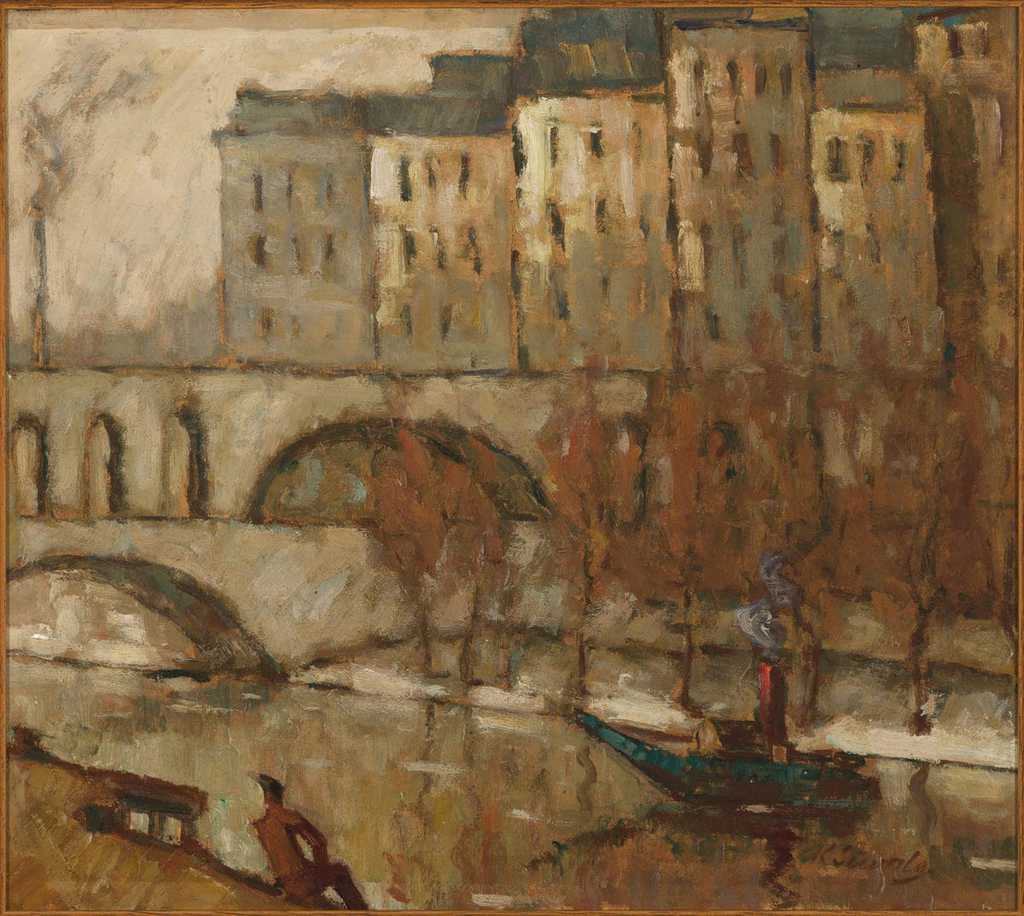
Süvalo went to Paris in 1929. He arrived in the city in February or March and expressed his elation in his first letters (among other things, he recommended considering whether two art schools were really necessary in Estonia since either way, studying in Paris is still the best option). Süvalo also visited the Louvre and was enraptured by Leonardo da Vinci’s "Mona Lisa". He also admired Paris’s integral general architectural appearance. He worked at L’Academie de la Grande Chaumiere when he was in Paris, participating in an exhibition there with three of his works. A certain calming in Süvalo is usually associated with his works completed in Paris, and his style is seen as becoming more confident and stable. At the same time, however, his colouring also became considerably darker than it had been before. He did not stay long in Paris, only until 1930.
Süvalo was relatively productive in Paris and he completed many works. This work is a slightly smaller version of his work "The Bank of the Seine" (1930), differing from it only in small details. Versions that repeat down to the smallest details are known in the case of several of Süvalo’s other works as well.
It is difficult to see emotional enchantment regarding the metropolis in the dark colouring. Here Süvalo has instead experimented with creating a rhythm of forms – buildings and bridges are stylised into geometrical forms, we see cubes, arches and rectangles – and with the possibilities to work with limited colouring. The entire painting is suffused in damp grey, into which autumn trees also blend. Yet a little ship consisting of patches of colour is placed on such a background as a contrast. The winding column of smoke rising from its chimney rhymes with the wisp of smoke visible at the left edge of the picture. Similarly to many other Estonian artists, Süvalo does not see people or modernity in depicting the big city. Paris takes its place before his eyes as a timeless, romantic place, where its dreamy atmosphere is important first and foremost.